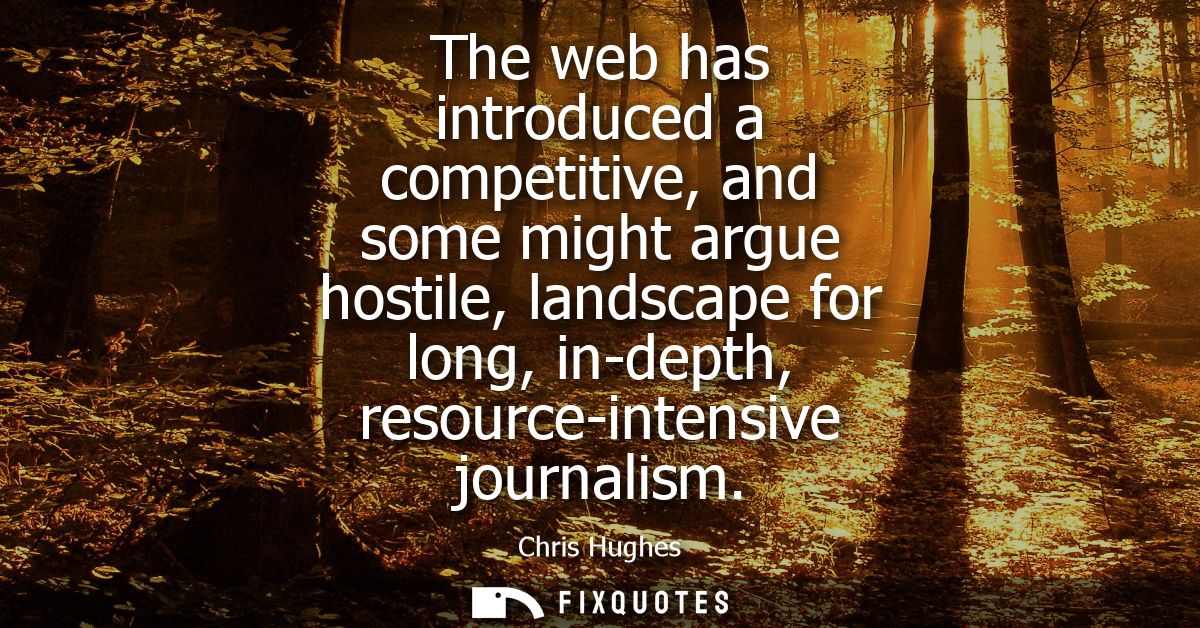"The web has introduced a competitive, and some might argue hostile, landscape for long, in-depth, resource-intensive journalism"
About this Quote
The commercial and cultural logic of the web rewards speed, scale, and constant novelty, while long-form, investigative work demands time, money, legal support, and editorial patience. When distribution costs fell to near zero, the supply of content exploded, fragmenting audiences and transforming attention into the scarcest resource. Programmatic advertising then priced audiences rather than journalism, optimizing for clicks and impressions instead of depth and civic value. Real-time analytics, A/B testing, and algorithmic feeds nudge editors toward what travels fast, not what illuminates slowly. The result is an environment where a costly six-month investigation competes in the same feed with a reactive post written in an hour, and the latter often wins the economic contest.
Hostility is more than competition. Platforms act as gatekeepers with opaque algorithms that can erase an outlet’s reach overnight, while aggregators and AI systems siphon value by summarizing or repackaging reporting without bearing the cost of producing it. The “pivot to video” era showed how platform incentives can mislead entire newsrooms, leaving layoffs and shuttered desks in their wake. Meanwhile, harassment campaigns, brigading, doxxing, and legal intimidation disproportionately target investigative reporters, especially women and journalists of color, adding personal risk and psychological toll to already precarious work. The financial exposure of deep reporting, fact-checking, document retrieval, travel, lawyers, clashes with shrinking margins and the volatility of digital ad markets, making the business case fragile even when public interest is high.
Yet the web also enables countervailing strategies: membership and subscription models that align revenue with reader value; philanthropic and nonprofit newsrooms that fund investigations; cross-border collaborations that pool expertise and data; newsletters and niche verticals that cultivate loyal communities; and interactive, data-driven storytelling that deepens engagement. None of these erase the structural pressures, but they show a path where incentives can be realigned. Sustaining resource-intensive journalism online requires intentional design, diversified revenue, safety and legal support, transparency from platforms, and public or philanthropic investment, to ensure that the stories hardest to produce are no longer the easiest to starve.
About the Author

